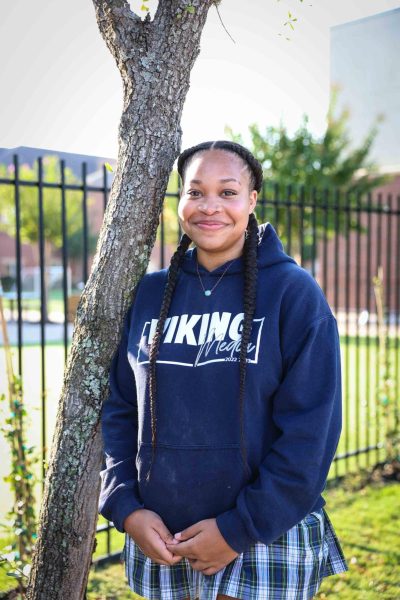The International Baccalaureate, also referred to as “IB,” is a very intense and rigorous curriculum that many private and charter schools offer. Here at The Village School, many students take on the challenge of IB courses, whether full-IB or part-time IB Students. Total IB students must take at least six IB classes, a Theory of Knowledge course, a Research Methods course, complete a CAS Project, and write an Extended Essay to graduate with the IB diploma. In comparison, part-time IB students take less than six IB classes and don’t get the IB diploma. The International Baccalaureate program is one of the key reasons students and parents choose to attend The Village School, but do students know what they’re signing up for?
As a part-time IB student myself, I can attest that IB is very demanding and, in a lot of cases, stressful. I came to The Village School my junior year, which is the year that students are introduced to taking IB classes, and, coming from a public school that did not incorporate IB, it was a big adjustment. IB completely differs from honors, Advanced Placement (AP), dual enrollment, or Pre-AP classes. The curriculum is very detailed and requires immense memorization. For example, most IB tests include free choice responses, where students must answer the question based on their knowledge of the subject. With AP testing, students attend a regular academic course with an AP curriculum and, at the end of the year, take the AP test. IB testing is entirely different from any other kind of testing format, and it’s also a little different between classes. For most, students are given the paper 1 (usually multiple choice), paper 2 (usually free response), and paper 3 (for HL students only) tests. As a junior with only three IB classes, I was exhausted from figuring out how to pick up the pieces of the IB curriculum. I soon regretted taking such challenging courses because of how strenuous they can be; I did not know what I got myself into. The downside about attending a school with an IB program is that to make the top 6% in the class (to gain automatic admission to the University of Texas at Austin), you have to be a full IB student to get the GPA weighting. This means that students who do not take full IB automatically can’t make the top 6%.
Not only was it stressful trying to handle my IB courses, but it was also my junior year, which meant that everything in the academic realm was challenging. Junior year was the most difficult year of high school, and trying to do something I had never done before in my academic career made it worse. I began to feel alone because most of my friends were full IB, and they didn’t seem to struggle as much as I did. I kept wondering why this was so hard for me and why no one else found it as tricky. Now that I am a senior, I realize I am not alone. I know many people who took IB classes junior year and dropped some of those classes or dropped out of the program altogether. They, too, realized the stress wasn’t worth it and it was better to have a more relaxed senior year. Being a senior is much easier when taking these courses because it is now more familiar, and you know what’s expected of you.
The main concern that people have is that they think universities want you to take full IB or they won’t accept you, which is entirely false. The truth is, there is only a point in taking full IB if you want to go to a top university, such as an Ivy League, or study abroad. “There are so many IB deadlines, extended essays are due, and there are a lot of things for college apps you are doing,” said Senior Meera Dhingra, a full IB senior. She elaborated that she wished she had known before taking full IB not to procrastinate because work and deadlines pile up. Meera agrees that taking the course significantly increases your chances of getting into top universities and says despite the challenge she would recommend full IB to sophomores.
Although Village is a more competitive school, no one said you can’t get into a good school if you don’t take full IB or any IB. This misconception hurts so many students because they’re taking classes that are incredibly draining, all because they think universities wouldn’t want them if they didn’t.








